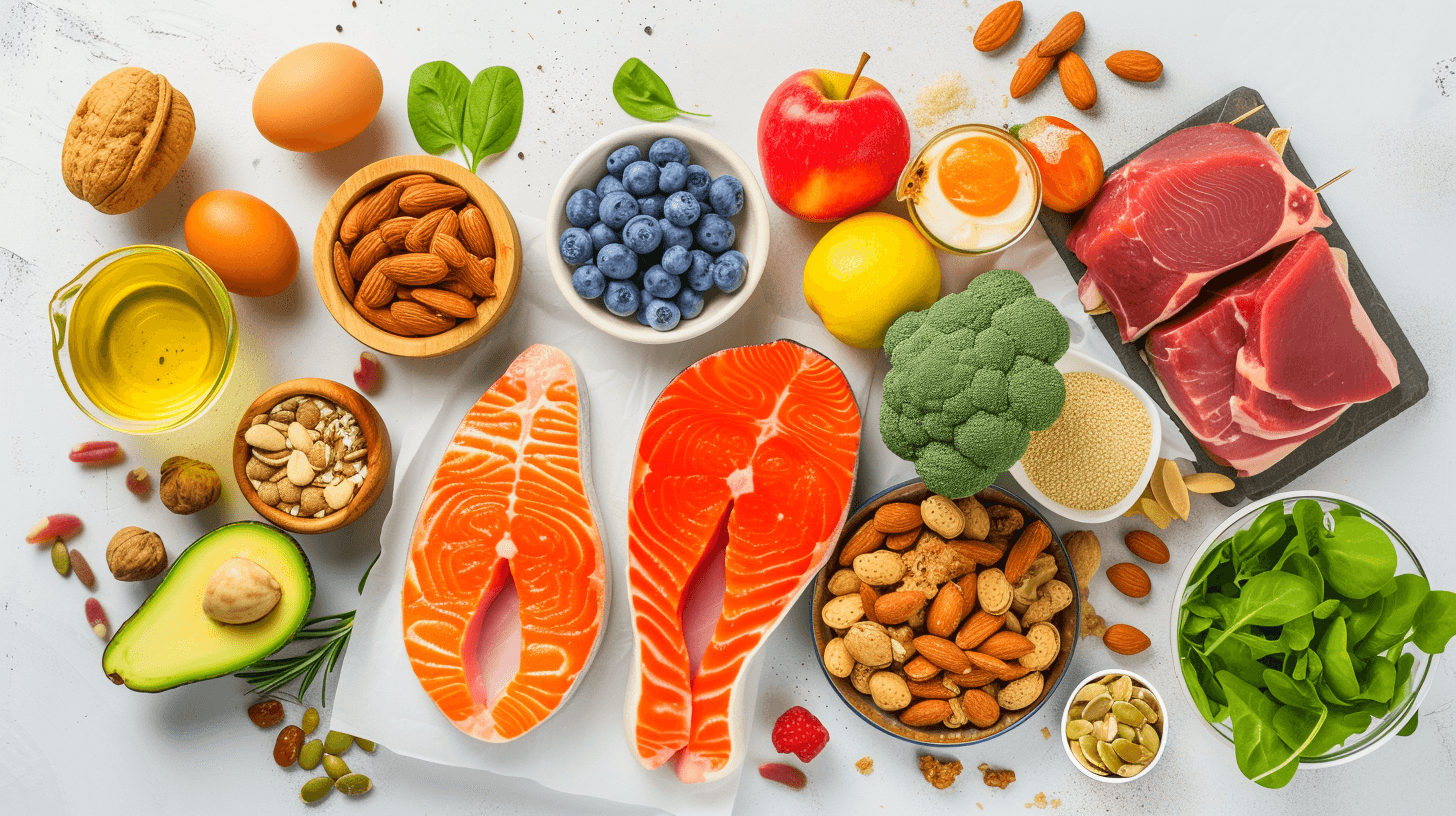
For the last sixty years medical authorities, physicians, the food industry, and popular health media have assured us that eating a low-fat diet is the key to weight loss, a healthier heart, and a longer life. But the findings of a major new study tell a different story. So, if you enjoy full fat milk, cheese, and a juicy steak chock full of saturated fat, then go ahead and savor them.
As part of a balanced, healthy diet, these fatty foods will not increase your risk of heart disease. In fact, they’ll substantially lower your risk of heart disease and help you live longer. Who knew?
Whose idea was a low-fat diet anyway?
Low-fat diets first emerged in the late 1950s and were touted as good for the whole nation. Ancel Keys, a prominent nutritional scientist, was influential in promoting the low-fat diet, particularly what he termed the Mediterranean diet, which included less meat and more grains, vegetables, fruits, and olive oil. This approach gained traction, and by 1957, the American Heart Association started proposing modifications in dietary fat intake to reduce the incidence of coronary heart disease. By the 1960s, the approach shifted from being directed at high-risk cardiac patients to being recommended to all Americans as a general preventive measure against heart disease.
By the 1980s the message about the importance of eating a healthy low fat diet had intensified; however, experts could cite little clear evidence that low-fat diets reduced weight, prevented heart disease, or helped you live longer. This period also saw the rise of the diet industry capitalizing on this trend, with extensive promotion of low-fat diets to large audiences, notably through magazines.
By the 1990s criticism of this one-size-fits-all low-fat diet advice continued. And now, the latest research pokes more holes in the low-fat diet theory and suggests that the saturated fat intake from whole fat dairy and red meat can be important components of a healthy diet.
The truth about good fats and bad fats

Good fats, also known as unsaturated fats, are considered healthier for the body, especially the heart, compared to bad fats, which include saturated and trans fats. Good fats are found in foods like vegetable oils (e.g., olive, canola, sunflower, soy and coconut), nuts, seeds, and fish. They can help lower the risk of cardiovascular disease and are an important part of a healthy diet.
On the other hand, bad fats, such as saturated fat and trans fat, can increase the risk of various diseases, including heart disease and obesity. Saturated fats are found in animal products and some plant oils, while trans fats are often present in processed foods made with partially hydrogenated oils.
Many low-fat products replaced fat with sugar and other additives, leading to unintended health consequences. The importance of dietary fats for various bodily functions, including promoting fullness and satiety, energy production, vitamin absorption, and providing essential fatty acids, became more recognized. The over-riding message has been that it's important to limit the intake of bad fats and instead focus on consuming good fats in moderation to support overall health. So, what have many people eaten instead? They've focused on eating more carbohydrates...
The truth about carbohydrates
High-quality carbohydrates, also known as good carbs, are typically found in whole, fiber-rich foods such as fruits, vegetables, legumes, and whole grains. These carbs are complex and digested more slowly, leading to a gradual release of glucose and preventing spikes in blood sugar. They are also packed with nutritional layers like bran and fiber, which make you feel full and provide essential nutrients.
On the other hand, low-quality carbohydrates, or bad carbs, are often added to processed foods as refined sugars and starches. These simple carbs are digested quickly, causing spikes in blood sugar and leading to a short-lived feeling of fullness, which can result in overeating and weight gain. Examples of bad carbs include white bread, refined pasta, pastries, and sugary drinks. Unfortunately, there are also many so-called health foods that fit this bill-- they're like wolves in sheep's clothing-- and are part of many recommended healthy low-fat diets.
The reality is that it's important to remember to focus on increasing whole and complex carbohydrates while minimizing the consumption of added sugars and refined carbs for overall health and well-being. And, according to new research, you can enjoy some meat and dairy products, too.
The PURE diet is linked to longer life

Researchers taking a closer look at the PURE diet, which emphasizes fruit, vegetables, and whole fat dairy uncovered some exciting findings for foodies. The study, conducted by the Population Research Health Institute, a joint institute of McMaster University and Hamilton Health Science of Canada, included an extensive network of collaborators in over a hundred countries examining fat intake, among other things.
The team used the Prospective Urban Rural Epidemiology (PURE) cohort involving 147,642 people from 21 countries on five continents. They calculated a healthy diet score based on six food categories linked to longevity: fruit, vegetables, legumes, nuts, fish, and dairy.
They assigned a score of one (healthy) for intake of each above the median (50 percent of the population) and a score of 0 (unhealthy) for intake at or below the median, for a total score of zero to six. So, just being in the top half of the population for intake of these six food groups would give you a maximum score of six, a highly attainable goal.
Then they linked the score with mortality, myocardial infarction (heart attack), stroke, and all forms of cardiovascular disease (CVD) in the study population. They adjusted the analysis for factors that could influence the relationships such as age, gender, waist-to-hip ratio, education level, income, urban or rural location, physical activity, smoking status, diabetes, use of statins or high blood pressure medications, and total energy intake.
The results of the study will put a smile on the face of those whole enjoy full fat milk, yogurt, and cheese…
Lowered mortality risk by 30 percent
After a follow up of nine years, compared with a diet score of one point or less, a diet score of five points or more was associated with an 18 percent lower likelihood of CVD, a 14 percent lower risk of myocardial infarction, a 19 percent lower risk of stroke and a 30 percent lower risk of death.
The team applied the diet score to five other studies containing nearly 100,000 people across the world and the results remained consistent whether applied to healthy people or those with illnesses such as CVD or diabetes. When the researchers included whole grains or unprocessed red meat, the results were similar, indicating that a modest amount of either can be part of a healthy diet.
For instance, those in the least healthy category scoring one or less consumed 24.1 grams of unprocessed red meat per day. Those in the healthiest category scoring five or more consumed 54.5 grams.
Dr. Andrew Mente, who led the research which was published in the European Heart Journal, explained, saying, “This was by far the most diverse study of nutrition and health outcomes in the world. Our results show that up to two servings a day of dairy, mainly whole fat, can be included in a healthy diet. This is in keeping with modern nutrition science showing that dairy, particularly whole fat, may protect against high blood pressure and metabolic syndrome.”
In an accompanying editorial, Dr. Dariush Mozaffarian of the Friedman School of Nutrition Science and Policy, Tufts University, Boston, stated: “The new results in PURE, in combination with prior reports, call for a re-evaluation of unrelenting guidelines to avoid whole fat dairy products.”
How to follow the PURE diet

The PURE diet includes the following servings, with examples of a single serving, to provide a score of five or six:
- Daily Servings: Fruit two to three (medium apple, banana, pear), vegetables two to three (one cup leafy vegetable; ½ cup other vegetable).
- Weekly Servings: Fish two to three (three oz cooked), legumes three to four (½ cup beans or lentils), nuts seven (one oz), dairy 14 (one cup milk or yogurt; 1½ oz cheese).
- Unprocessed red meat and poultry: This can be part of the PURE diet in moderation, about two to three oz per day.
What about grains? Since whole grains didn’t contribute to the PURE score’s usefulness in predicting risk of CVD or death, including a moderate amount (single serving per day) of whole grains is optional. Examples include one slice (40 g) of bread; ½ medium (40 g) flat bread; ½ cup (75–120 g) cooked rice, barley, buckwheat, semolina, polenta, bulgur, or quinoa.
- Mente, A. et al., Diet, cardiovascular disease, and mortality in 80 countries. European Heart Journal, Volume 44, Issue 28, 21 July 2023, Pages 2560–2579, https://doi.org/10.1093/eurheartj/ehad269 https://academic.oup.com/eurheartj/advance-article/doi/10.1093/eurheartj/ehad269/7192512?login=false
- McMaster University. Faculty of Health Sciences. Article: Not eating enough of these six healthy foods is associated with higher cardiovascular disease and deaths globally. July 7, 2023. https://healthsci.mcmaster.ca/not-eating-enough-of-these-six-healthy-foods-is-associated-with-higher-cardiovascular-disease-and-deaths-globally/
- European Society of Cardiology. Global diet study challenges advice to limit high-fat dairy foods. 07 Jul 2023. https://www.escardio.org/The-ESC/Press-Office/Press-releases/Global-diet-study-challenges-advice-to-limit-high-fat-dairy-foods
